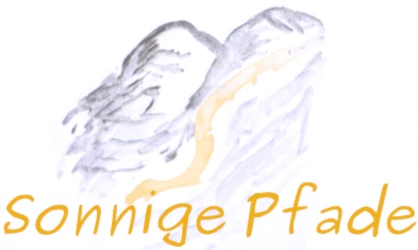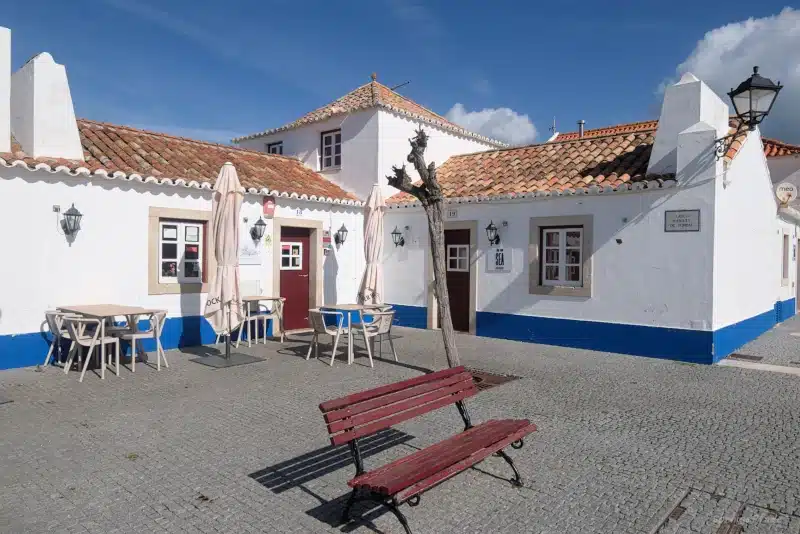
In the fishing village on the Atlantic coast
The pretty village of Porto Covo in the Portuguese nature park on the Costa Vicentina is a popular summer resort for locals and the starting point for the fisherman’s trail along the Atlantic coast. Hikers on various routes meet up here and find a convenient shelter, especially in winter.
Discovered on the run from the winter rain
Escaping the rain took me to the small fishing village of Porto Covo da Bandeira on the Alentejan coast, a few kilometers south of Sines. I had just finished my hike along the “Historic Route” of the Rota Vicentina long distance hiking trail in Santiago do Cacem when a very rainy day threatened. Quite expected in Portugal in February, at some point the Atlantic pours its sweat here too. The large number of cheap places to stay that were empty at this time of year prompted me to make a detour to Porto Covo. I got there by public bus via Sines.
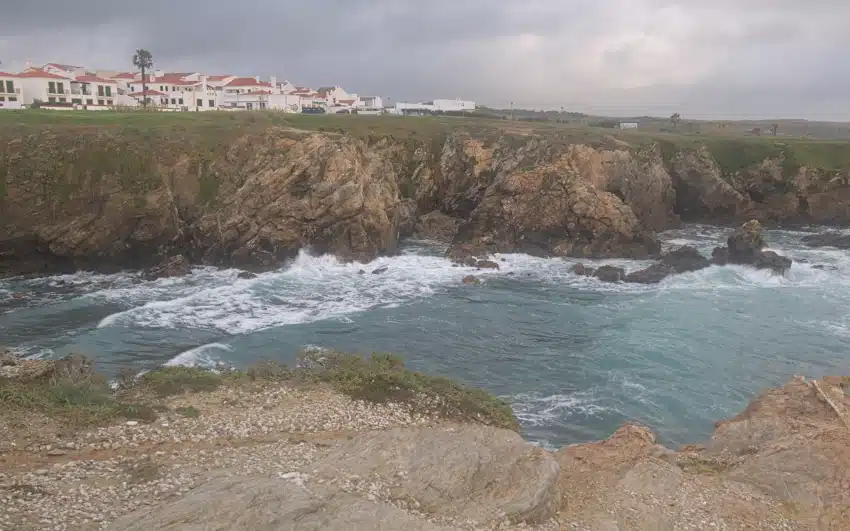
Porto Covo is geared towards visitors
Harbor and fish from the market hall
Porto Covo is an old fishing village (around 1000 inhabitants) with steep cliffs leading down to the sea. The tiny harbor is wedged into what you might call a “rocky embrasure”, carved into the cliffs by a stream flowing down over thousands of years. There are only a few beaches, very narrow and small, mostly reached by stairs, but some of them are quite well protected. To call Porto Covo a “seaside resort” is therefore almost risqué. Nevertheless, the village is very popular with both well-traveled and local visitors. In the warmer seasons, the streets, the beach promenade and the cafés are packed. In January and February, however, only a few guests get lost in the deserted streets, some of the restaurants are closed and others have reduced their offerings.
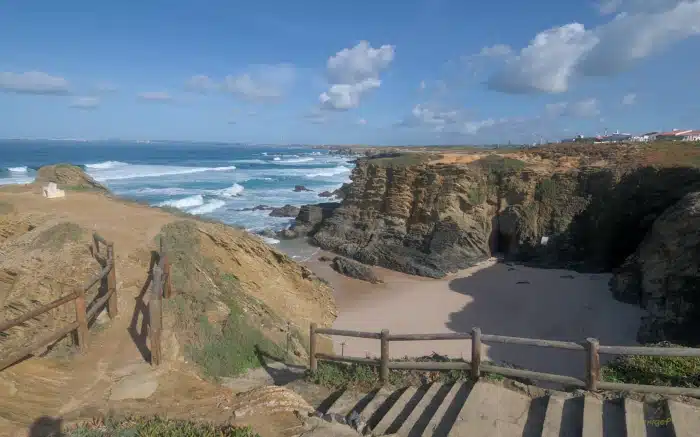

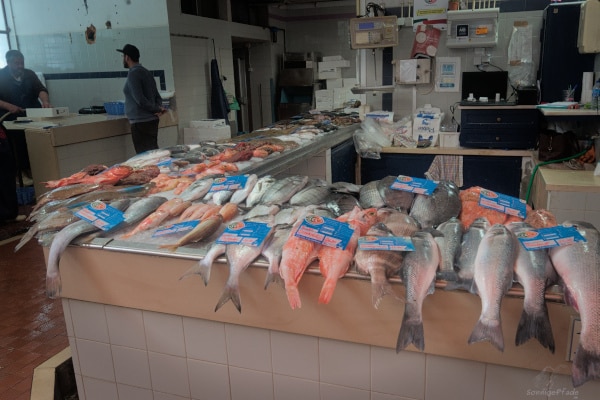
On the Church square, a single handicraft and souvenir seller stubbornly defies the wintry weather, in the market hall only a few stalls are occupied with fresh fish – even the restaurateurs have hardly any demand at the moment. If you are looking for peace and quiet, this is the place to be at this time of year.
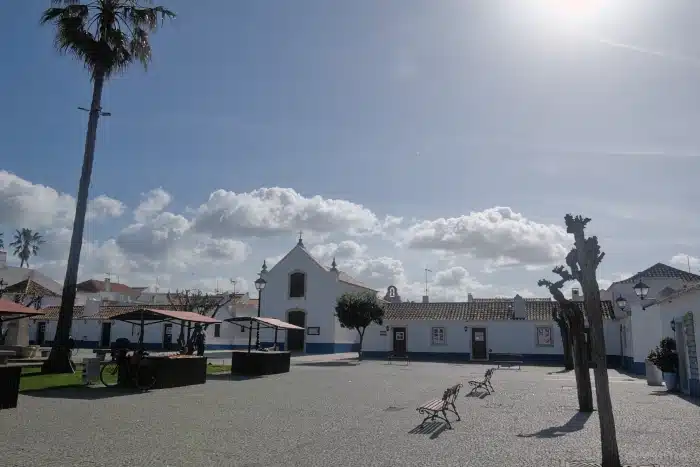
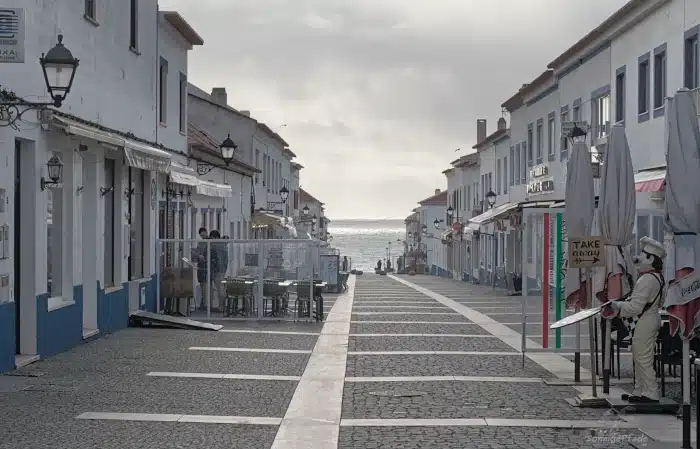
The “island of the peach tree”
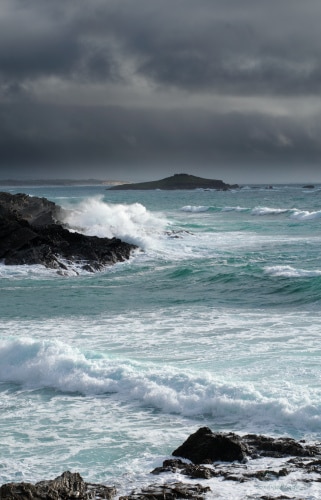
In the warmer months, fishing boats take tourists to the small offshore island of “Ilha do Pessegueiro”, the island of the peach tree. At the beginning of the 1980s, the remains of a Roman settlement from the 1st century were excavated on this island, from which the foundations of some houses and furnace foundations for baking and blast furnaces for melting metal can still be found. In the 16th century, a fort was built on the island to protect the coast from corsair raids.
The ruins of the fort are the island’s biggest attraction. The authorities and tourist office regularly warn against swimming to the island. Although it is only around 250m off the coast, unpredictable currents can cause swimmers to drift off or cause exhaustion.
Hiking near Porto Covo
Trilho dos Pescadores – the “fishermen’s path”
Most of the overnight guests in Porto Covo in winter are hikers. This is because the small town is the starting point or destination for the so-called “Fishermen’s Trail” – Trilho dos Pescadores, the coastal arm of the Rota Vicentina. Well, the fishermen’s path actually starts in Sao Torpes, about 10 km further north. But this is once again “somewhere in the middle of nowhere”, so you’ll have to take a cab from Sines or ask the bus driver to stop at the right bus stop (opposite the old coal-fired power plant).
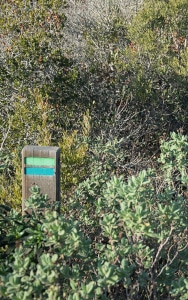
From Porto Covo, this fishermen’s trail leads south to Cabo de Sao Vicente, the most south-westerly cape in Europe (green-blue stripe marking). If you don’t want to hike quite so far, but would rather “get a taste” of it, you can at least walk the stage to Vila Nova de Milfontes. That is around 20km. But even this should not be underestimated, as the sand in the dunes and the steep ascents and descents on the cliffs take their toll on hikers and hiking boots.
There is another branch of the Fishermen’s Trail – along the rocky Algarve from Lagos to Sagres, and then from the east to the lighthouse at Cabo de Sao Vicente. This part is about 44 km long. Before I turned onto the “Historic Trail”, I was walking there.
Local circular routes in the Alentejano Southeast Nature Park
If you have a permanent accommodation in Porto Covo, you can indulge your wanderlust on the circular trails around the village. These local hiking trails are marked with yellow and red stripes and a number on the signposts. At the tourist information office above the harbor, you will also find a map with descriptions of the possible hiking routes, information about the Rota Vicentina and the local stages of the Way of St. James.
… a piece of the Way of St. James
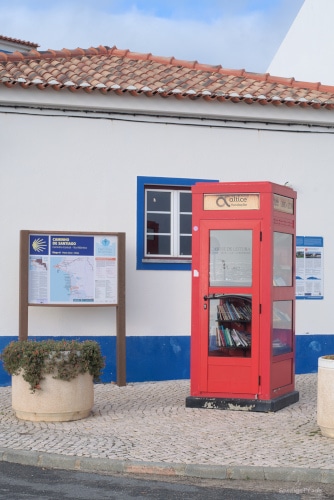
If you want to hike north towards Sines, you can follow the shell markings and yellow arrows of the Way of St. James (Caminho de Santiago). Porto Covo is a stop on the Way of St. James from the south of Portugal to Santiago de Compostella in the Basque Country.
Hiking in Portugal, especially in the south, is also possible in the winter months – if you have enough rain protection* with you and can be prepared for one to three days of heavy rain to interrupt your tour. Porto Covo was just the right refuge for me for such a day.
Travel tips for Porto Covo
On foot, by bus or car – getting to Porto Covo
You can easily get to Porto Covo by public bus via Sines (approx. 10-15km) or from the south (Linha 8077 to/from Cercal do Alentjo). This is relatively cheap, but there are only about 2 buses a day. Timetables can be found, albeit somewhat laboriously, as a .pdf file on the Internet (search for line no. see above). Flixbus* and Rede Expressos* are more expensive, but you can also use them to travel further north or south. The bus stop is on the east side (facing away from the sea) of the market hall. Of course, you can also travel by car or hire car.
Accommodation in Porto Covo
Porto Covo has a large number of accommodations of various categories and facilities. There is also a large campsite and caravan site to the east of the market hall.
Not all vacation apartments and guesthouses are open in winter, but accommodation in Porto Covo is relatively cheap at this time. If you are traveling on a budget, you can stay in one of the three hostels.
budget
MUTE hostel* is located directly on the waterfront opposite a small beach and a light beacon on the coastal cliff. The hostel has two dormitories with dorm beds and shared bathrooms, as well as several comfortable private rooms with lake view in a quiet side wing. Breakfast from the buffet is included. The delicious restaurant with various burgers (including vegetarian) can also be used by non-guests during the day. The fishermen’s trail runs right in front of the building.
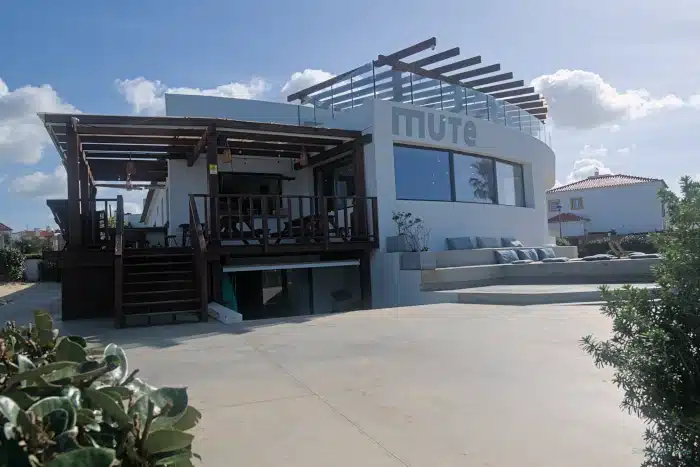
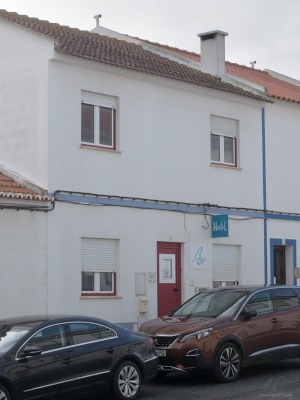
Ahoy Hostel* is another option in Porto Covo for tired hikers on the fishermen’s trail. Rather inconspicuous on the outside, this hostel offers dorm beds in a 4-bed dormitory.
… more upscale
The Zé Inácio – Alojamento e Restaurante* offers pleasant air-conditioned twin rooms in a historic building, but with a modern bathroom and in a prime location. Porto Covo’s pedestrian zone is just around the corner. The house offers delicious food in its own restaurant.
The rooms of the Quartos Abelha* are located in the center of Porto Covo and are well suited for walking groups with a shared kitchen and lounge. There is also a large family room for 4 to 6 guests.
If you are traveling in a group or large family and prefer a modern, well-equipped vacation home, Casa Calmar* is the place for you. These vacation homes for 6 to 8 guests are located just outside the village and offer peace and relaxation, e.g. by the private pool, wellness massages (for a fee) and bicycles for guests to hire.
Self-catering
If you are traveling on a budget and want to be largely self-sufficient, you should bring your own food from one of the larger towns. Although there are at least 3 “Minimercado” in Porto Covo for grocery shopping, they are considerably more expensive than elsewhere. The restaurants are also more expensive than the usual small cafés for locals in the countryside.
Weather in Porto Covo
The current weather is just as important for your hiking tour on the fishing trail as it is for swimming fun in the Atlantic. Here is a brief overview of the weather forecast for Porto Covo today and over the next three days.
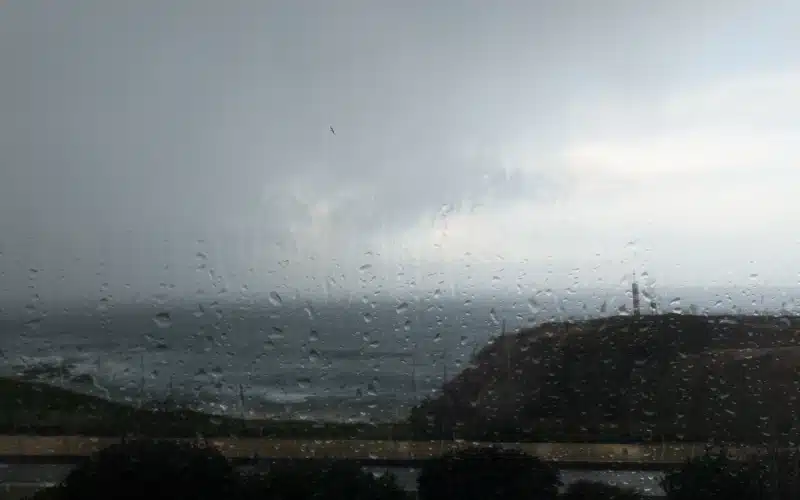
Fancy Porto Covo? Invite your friends!
If you liked the post, please share the link to the post on your social media channels and encourage your friends to take a trip to the Costa de Alentejo!
Note on *advertising links
Some of the links in the post are marked with *. These are advertising links that will redirect you to an agency or store when you click on them. If you order something there, the “Sonnige Pfade” blog receives a small commission to cover the technical costs. Nothing will be more expensive for you, as the commission is already taken into account by the providers in the pricing.
